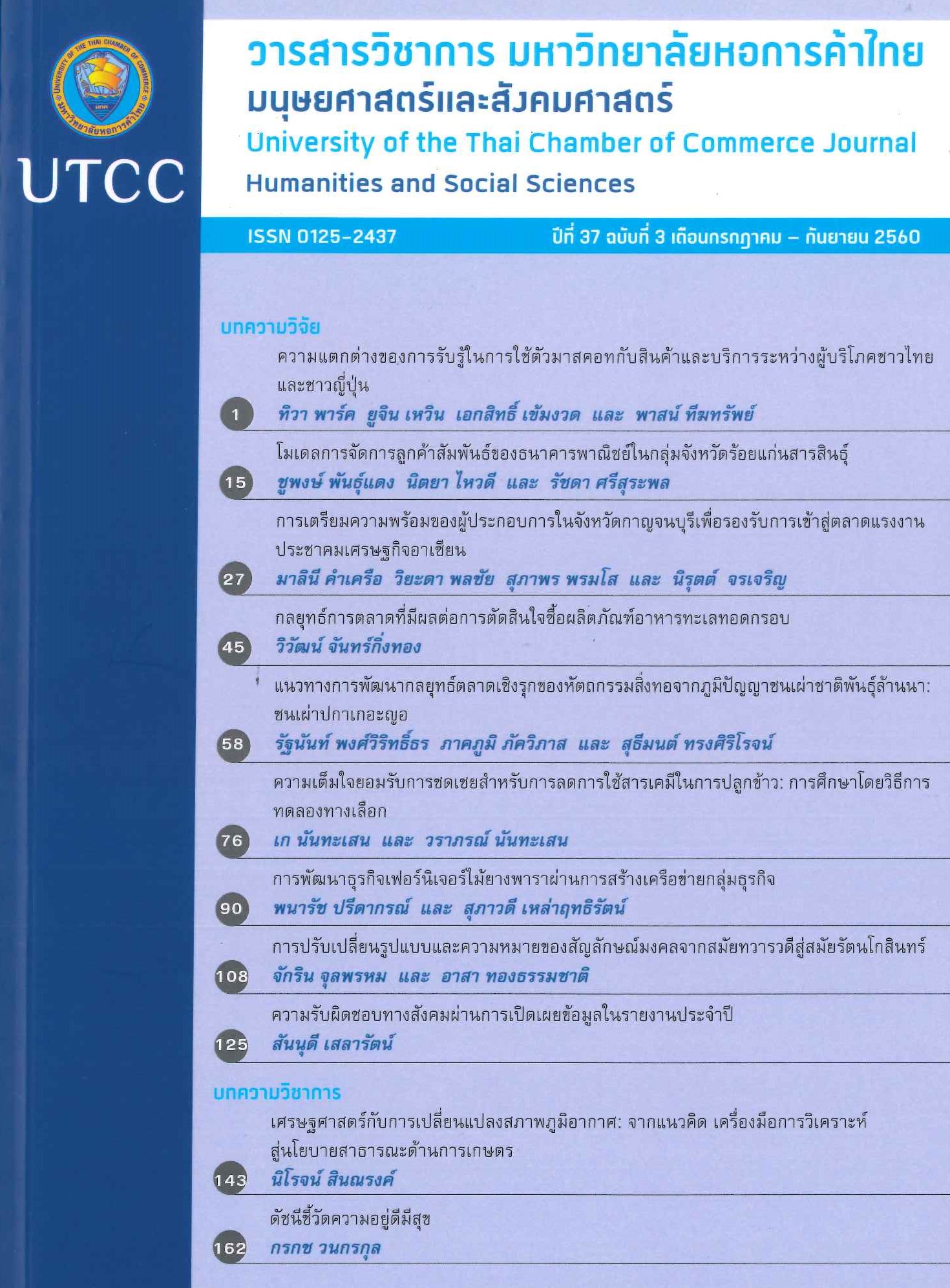The Indicators of Human Well Being
Main Article Content
Abstract
Well-being is a key for human resources development. In a society that the majority of people have well-being, its stability will remain and also contribute to the improvement of people. In terms of measurement, Well-Being Index is implemented as a tool to illustrate the value of well-being. In the past, Well-Being Index was identified and evaluated in a value symbolic form by itself. Later, in the consumerism society, Well-Being Index was described in a different form. Money and consuming potential of people, in terms of Gross Domestic Product and Gross National Product, were used as tools to measure the value of well-being. In the 1901s, the use of money and consuming potential as the well-being measurement tools was argued extensively. Concepts of Well-Being Index have started to change. Various dimensions are included to strengthen the Well-Being Index, for instances, social impacts, criminal problems, environmental problems, and others.
Article Details
ลิขสิทธิ์ของบทความ
ผลงานที่ได้รับการตีพิมพ์ถือเป็นลิขสิทธิ์ของมหาวิทยาลัยหอการค้าไทย ห้ามมิให้นำเนื้อหา ทัศนะ หรือข้อคิดเห็นใด ๆ ของผลงานไปทำซ้ำ ดัดแปลง หรือเผยแพร่ ไม่ว่าทั้งหมดหรือบางส่วนโดยไม่ได้รับอนุญาตเป็นลายลักษณ์อักษรจากมหาวิทยาลัยหอการค้าไทยก่อน
References
Coob, J., & Daly, H. (1989). For the common good: Redirecting the economy toward community, the environment and a sustainable future. Boston, MA: Beacon Press.
Easterlin, R.A. (1974). Does economic growth improve the human lot? Some empirical evidence. In P.A. David & M.W. Rider (Eds), Nations and households in economic growth: Essays in honor of Moses Abramovitz (pp. 89-125). New York, NY: Academic Press.
Nordhaus, W.D., & Tobin, J. (1972). Is growth obsolete?. In Economic research: Retrospect and prospect, volume 5 economic growth (pp. 1-80). New York,NY: National Bureau of Economic Research.
Office of the National Economic and Social Development Board. (2007). The report of Well-being in Thailand. Bangkok, Thailand: Author. (in Thai).
pongwiritthon, R., & Pakvipak, T. (2014). Guidelines for developing community products for a sustainable and creative economy: A case study of Ban Mae Pu-Ka, Sankamphang, Chaingmai.University of the Thai Chamber of Commerce Journal, 35(2), 44-58.(in Thai).
Skinner, B.F. (1948). Walden Two. Indianapolis, IN: Hackett.
Talberth, J., Cobb, C., & Slattery, N.(2006).The Genuine Progress Indicator 2006. Oakland, CA: Redefining Progress.
United Nations Development Programme. (2014). Human development report. New York, NY: Author.
Ura, K, Alkire, S., Zangmo, T., & Wangdi, K. (2012). A short guide to gross national happiness index. Thimphu, Bhutan: The Centre for Buthan Studies.
Veehoven, R.(1997). Advences in understarding happiness. Revue Québécoise de Psychologie, 18, 29-74.


